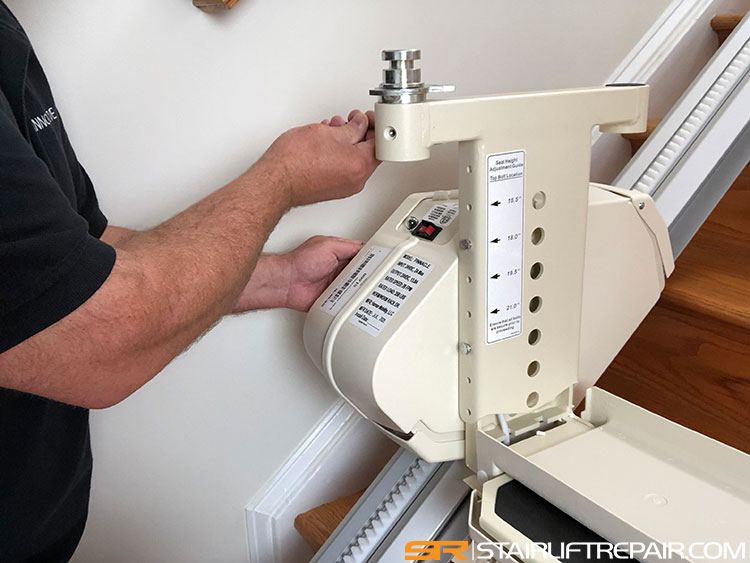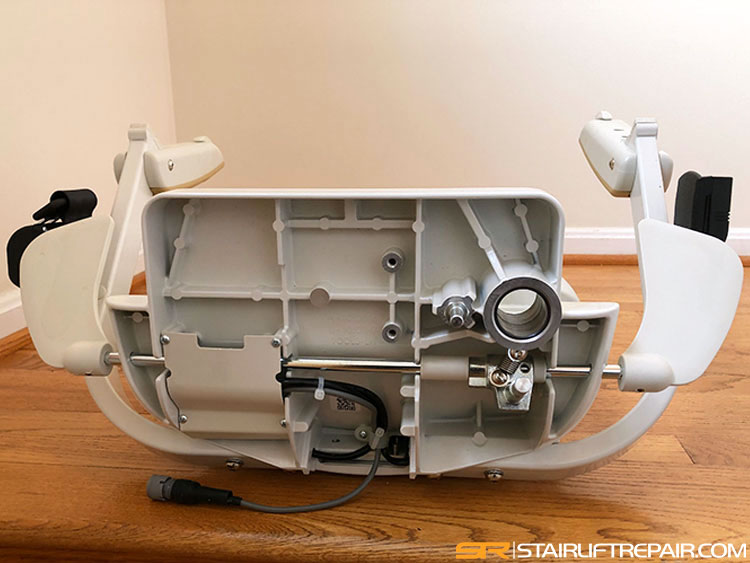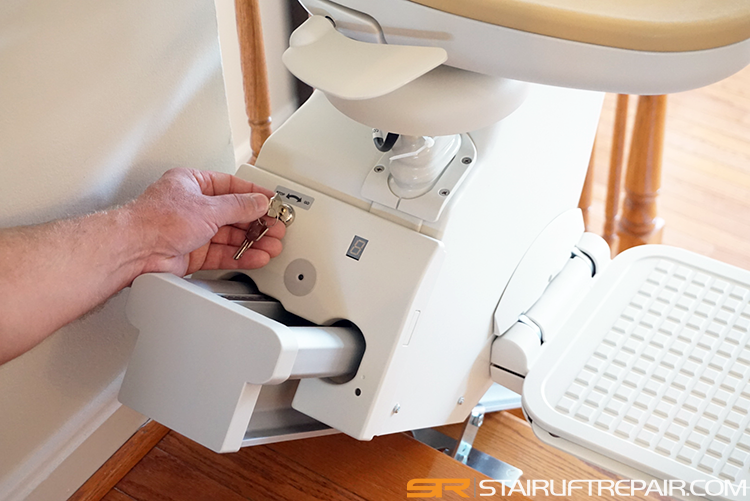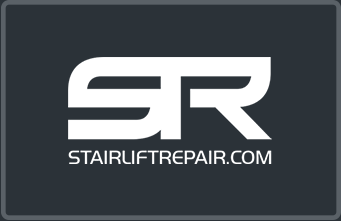In some cases a stairlift can be reversed or relocated to the opposite side of a staircase, but it depends on the design of the stairlift, the staircase, the specific requirements of the installation and if the lift was designed to be configured on site.
An example of this would be the Harmar Pinnacle SL600 that can be configured to the left or right hand side of the stairs. Changing the hand of this lift can be done in just a few steps by removing the seat and footrest, reposition the track to the opposite side of the stairs, then reinstalling the footrest and seat on the front of the chassie. In total re-handing this lift can be done in less than an hour. This is because the Pinnacle lift is designed from the manufacturer to be installed on either side of the stairs.
Stairlifts that can be changed to either side of the stairs include:
- Harmar Pinnace SL600
- Pinnacle SL300
- Bruno SRE 3000
- Bruno SRE 3050
- Handicare 1100
- Handicare 950
- SL-19 Staying Home Corporation
Stairlifts that cannot be changed to either side of the stairs include:
- Acorn 120
- Acorn 130
- Acorn 130 T700
- Brooks Stairlifts
- Handicare 1000
Acorn stairlifts cannot be reconfigured to the opposite side of the stairs because of the seat mount for the seat post. The seat base is a cast mold with a single offset for the seat post that cant be modified or changed. The chassis cover is also designed to the hand of the seat. Additionally some control wiring is specific to right hand or left hand lifts. While it may be possible to reuse the track and replace the chassis and seat with the correct orientation, the cost of doing so would likely be comparable to purchasing a new stairlift.
Curved stairlifts are not Reversible
Curved stairlifts are not currently reversible, as they are custom-designed and manufactured to match the precise dimensions, curves, and layout of the staircase they are installed on. If it was even possible reversing them would require new rails to be fabricated and tailored to the new configuration, which can be costly and time-consuming.
The biggest reason curved stairlifts can not be changed to the opposite side of the stairs is due to the chassis design which is specifically engineered to follow the custom rail configuration. The chassis houses the motor and drive mechanisms that move the chair along the rail, and its orientation and alignment are tailored to the original rail’s shape and direction. Reversing the stairlift would require a completely new chassis or extensive modifications, as the existing one is not adaptable to a mirrored or opposite configuration. This makes relocating curved stairlifts from right hand to left hand impractical and often cost-prohibitive.






Ask a question or leave a reply.
Please register or log in to ask a question.